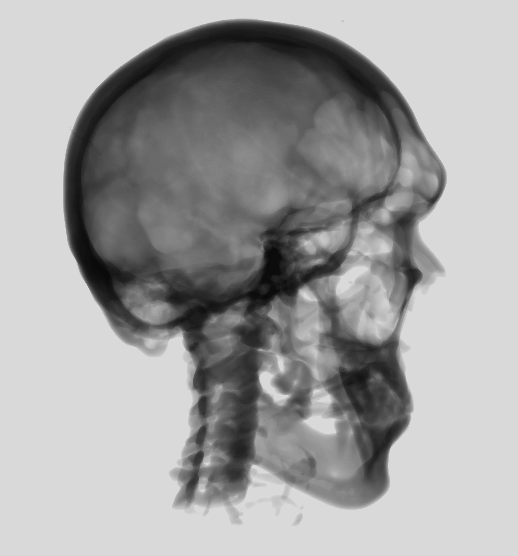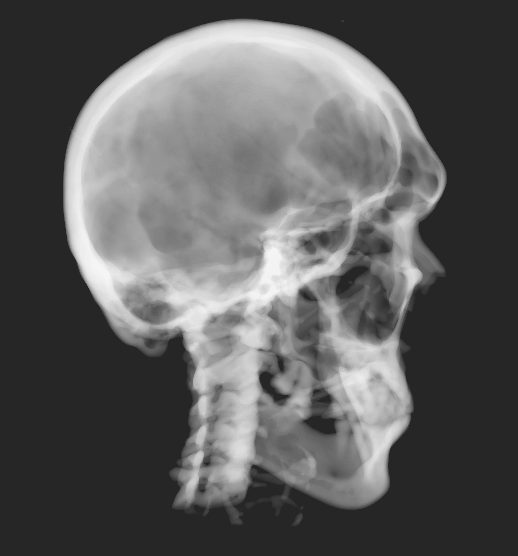Numerical Integration
← Absorption | ● | Integration with OpenGL →
Single step of numerical integration:
Numerical integration with alpha-blending:
Approximation for small $\Delta t$:
Over-Operator:
$RGB_{frame}' = A_{fragment}RGB_{fragment} + (1-A_{fragment})RGB_{frame}$
with
Further approximation:
Realization of numerical integration with OpenGL: Numerical integration by view-aligned slicing with slice distance $\Delta t$ with over-operator and constant vertex opacity $\alpha = 1 - e^{-\mu_A \Delta t}$, constant vertex color (0,0,0) and modulation of vertex opacity with 3D-texture lookup of $s(t)$.
Ambient background emission (white background) is attenuated:
X-Ray Positiv:

X-Ray Negativ:

- Advantage: commutative
- Disadvantage: no depth perception
← Absorption | ● | Integration with OpenGL →